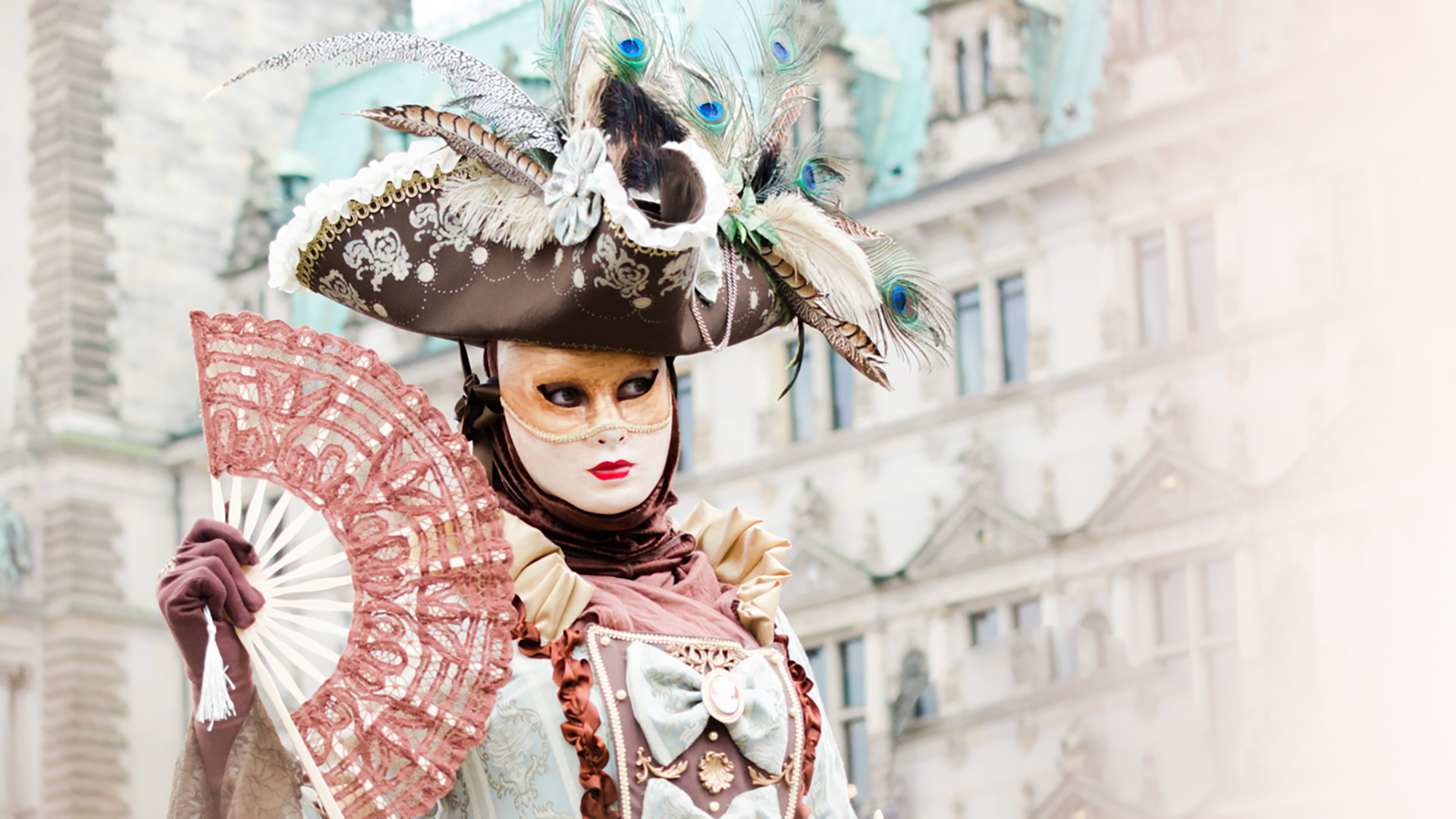
Mardi Gras, the celebration leading up to the beginning of Lent, features some of the biggest parties in the world. Revelers flood the streets in cities across Europe and the Americas. They flaunt flamboyant costumes and indulge in the pleasures of food, drink, and dance before the forty days of fasting and spiritual reflection leading up to Easter.
Recently, I mingled with the crowds attending the Magical Mask Festival in Hamburg, Germany. For two days people clothed in impressive costumes paraded through the main tourist area of the city. With the town hall, canals, historic buildings, and the city lake as a backdrop, I observed these elegant disguises that always incorporated masks.
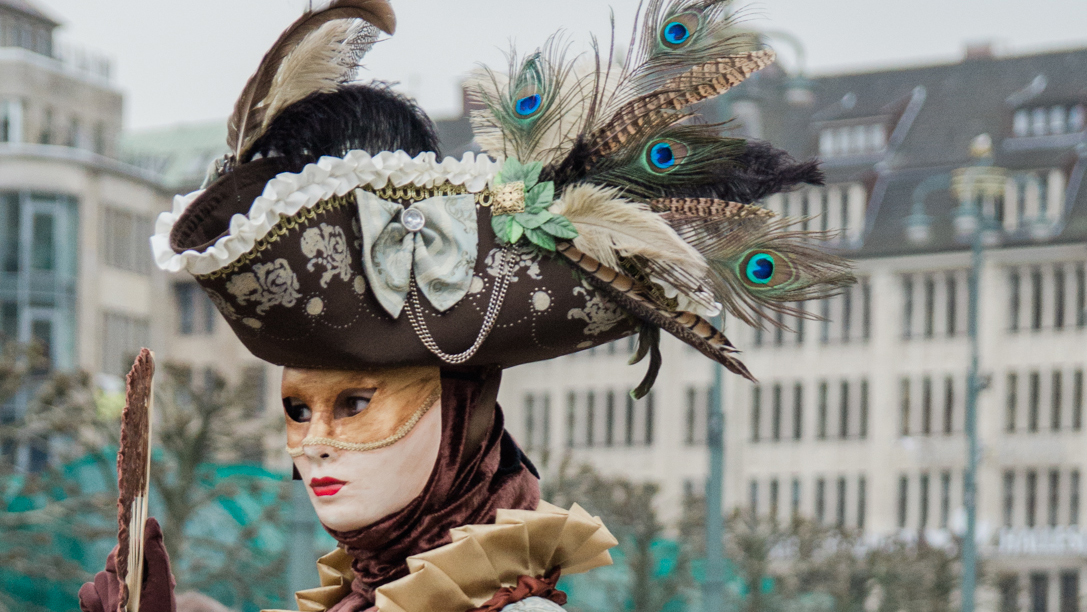 Hidden Pleasures and the Origins of Carnival
Hidden Pleasures and the Origins of Carnival
The German festival is a tribute to Carnival in Venice, the city where these celebrations originated during the medieval era. The beginning of the Renaissance in Italy influenced the development of Carnival traditions for years to come. The rise of humanism, the breakdown of social classes, and the emphasis on self-expression helped shape the way Venetians celebrated independence (and often immorality) each year during the party season.
During Carnival in Venice, people began to wear masks and elaborate costumes to disguise their identities. The masks worn during the festival allowed individuals from different social classes to interact with one another in a way that was usually prohibited by social norms.
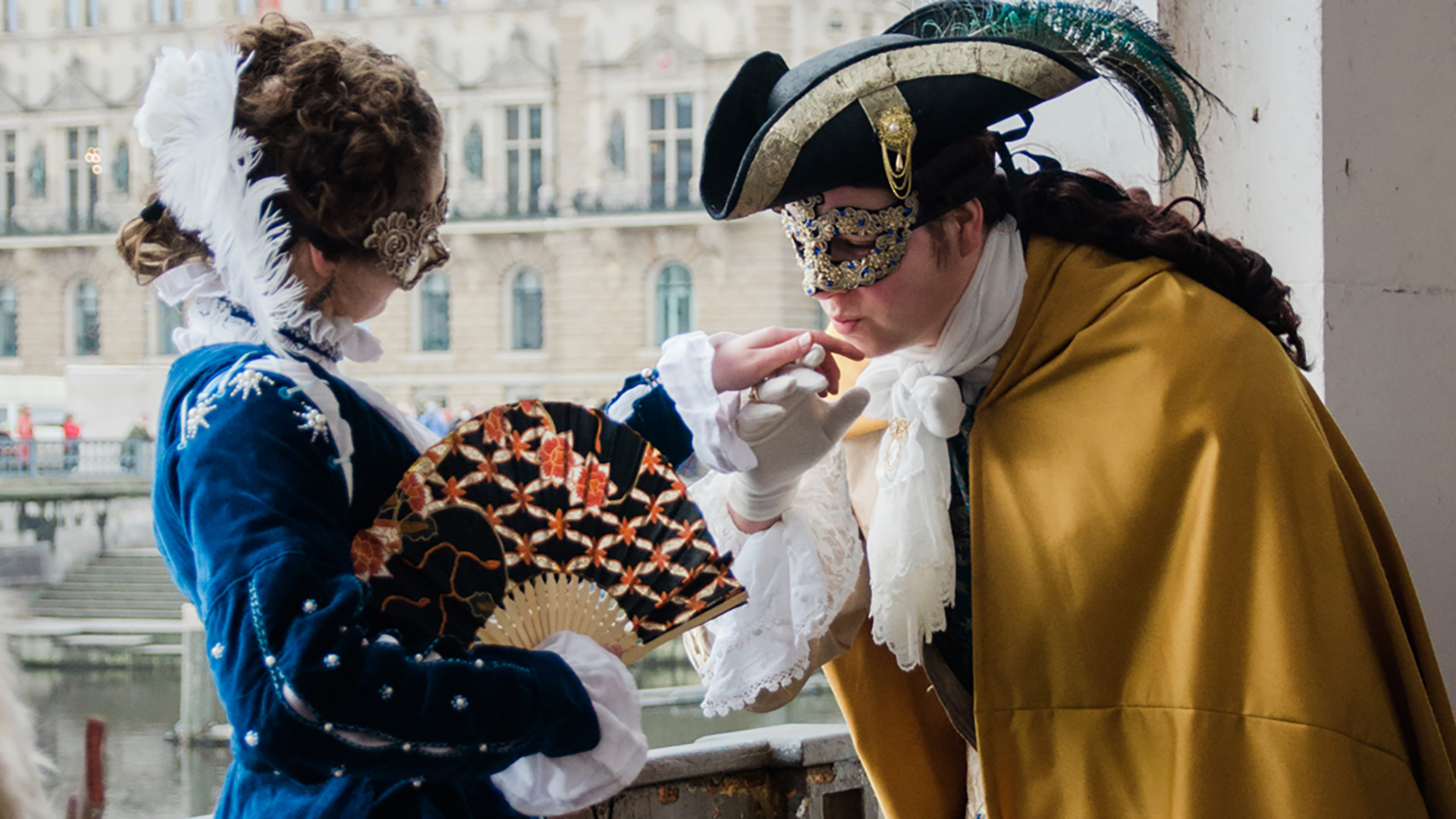 The traditional Venetian mask, called a bauta, is related to the German word behüten, meaning to protect. Revelers protected themselves and their reputations by wearing masks. They could party while remaining anonymous, hiding their status, gender, age, and even their religion. During Carnival, people felt the freedom to be who they wanted to be for the moment. Masks enabled them to play out fantasies or indulge in forbidden pleasures.
The traditional Venetian mask, called a bauta, is related to the German word behüten, meaning to protect. Revelers protected themselves and their reputations by wearing masks. They could party while remaining anonymous, hiding their status, gender, age, and even their religion. During Carnival, people felt the freedom to be who they wanted to be for the moment. Masks enabled them to play out fantasies or indulge in forbidden pleasures.
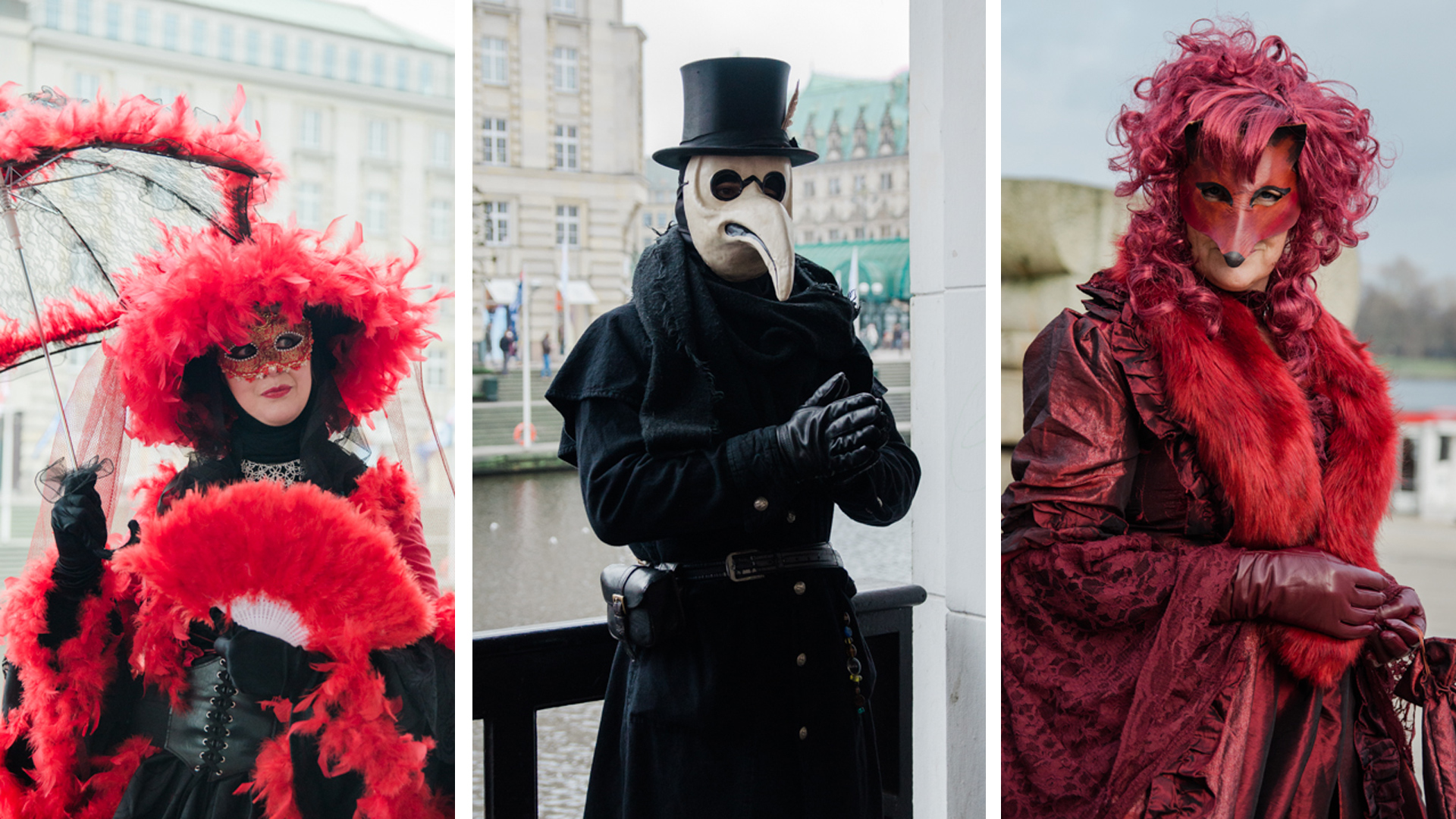 Mardi Gras: The Party Before the Fast
Mardi Gras: The Party Before the Fast
Carnival traditions spread from Venice throughout Europe. Roman Catholic Portuguese and Spanish colonialists carried the festival to Latin America where indigenous culture infused the celebration with local color. Today, Carnival celebrations in Brazil, Bolivia, Colombia, Mexico, Trinidad, and Uruguay are some of the largest in the world.
From its origin in the medieval era, the celebration of Carnival was closely intertwined with anticipation of Lent. Traditionally, the Lenten season, which lasts from Ash Wednesday to the Saturday before Easter Sunday, is a period of pious living that includes fasting from restricted food, religious discipline, and repentance. Among other things, it was a time to turn back to God after the excesses of Carnival.
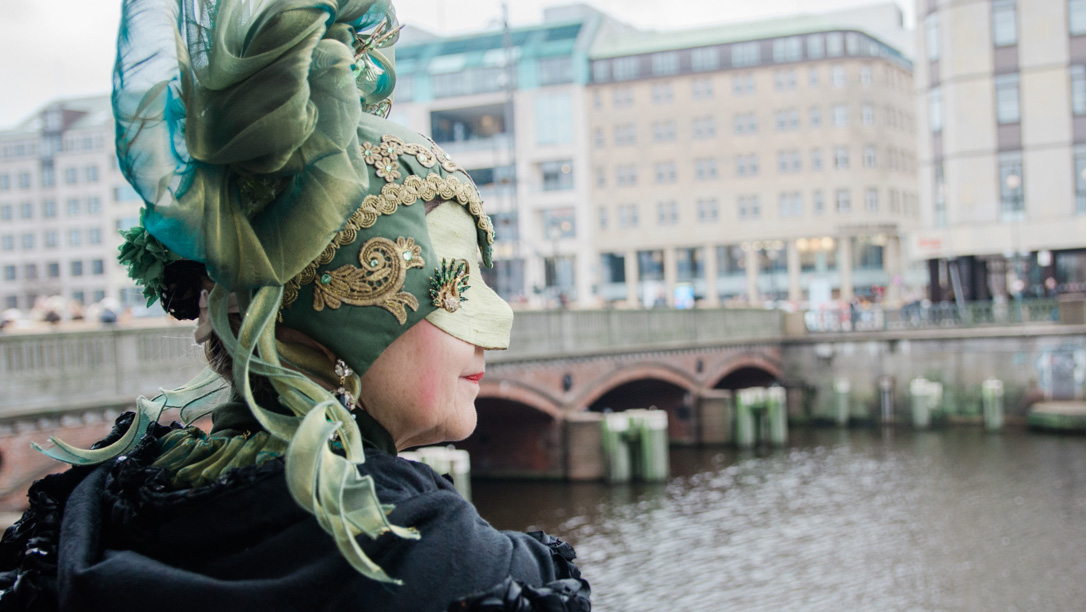 No parties were allowed during Lent. So before committing to a season of self-denial, one last party was held on the Tuesday before fasting began. The day known as Shrove Tuesday, Fat Tuesday, or most commonly, Mardi Gras, was the last opportunity to say “farewell to meat” before abstaining from it. The word Carnevale comes from two Latin words—carne, meaning meat, and vale, meaning farewell.
No parties were allowed during Lent. So before committing to a season of self-denial, one last party was held on the Tuesday before fasting began. The day known as Shrove Tuesday, Fat Tuesday, or most commonly, Mardi Gras, was the last opportunity to say “farewell to meat” before abstaining from it. The word Carnevale comes from two Latin words—carne, meaning meat, and vale, meaning farewell.
Although Mardi Gras customs vary in different countries, many celebrations still encourage revelers to put on a mask—literally and figuratively. The masquerade encourages people to live out fleshly desires with the hope that come Ash Wednesday, all will be forgiven and forgotten.
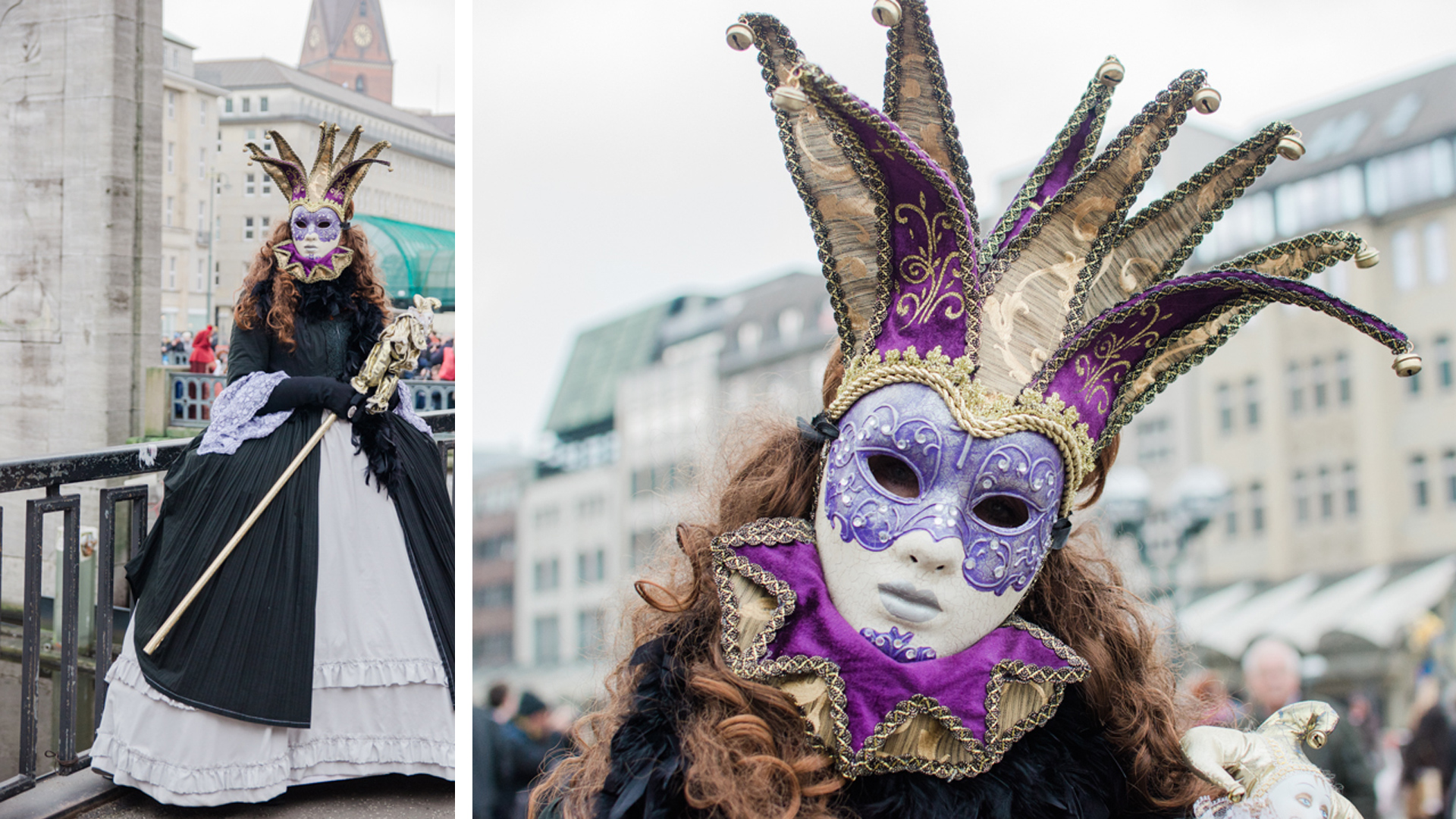 Facing Mortality
Facing Mortality
Ash Wednesday is only two days away. In Roman Catholic cathedrals and in many Protestant churches, priests and pastors will apply ash to people’s foreheads in the shape of a cross. The ashes are a reminder that we are dust and that in our mortal state we are desperate for someone to save us.
I wonder how many people with ash fresh on their foreheads will still be wearing masks. Will the ashes be painted onto masks or onto truly repentant hearts? Will they be a license to sin for a season, or a reminder of mortality and the need for repentance?
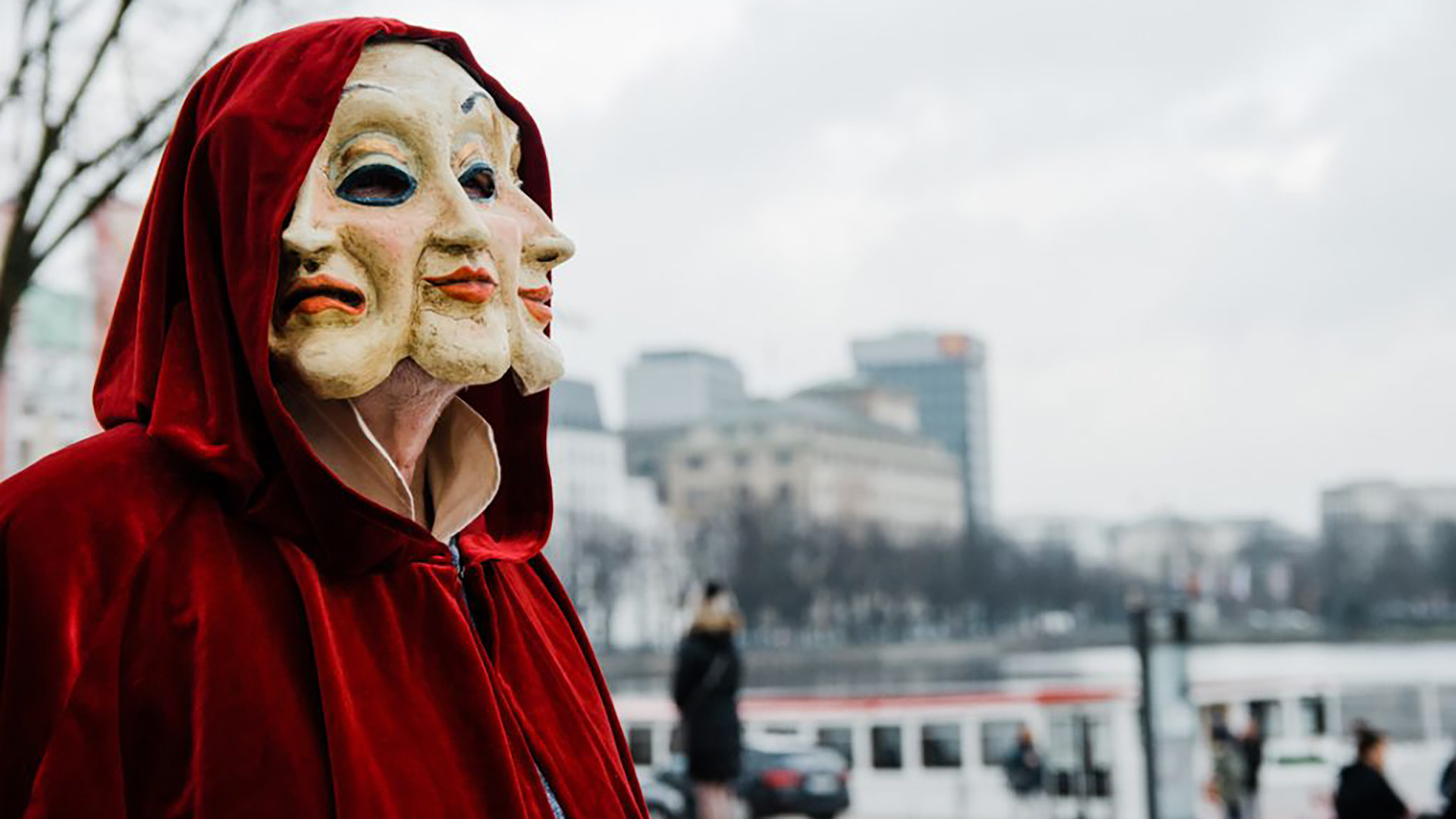 The Masks We Wear
The Masks We Wear
Not all our masks are as obvious as the decorated porcelain masks of Carnival, but we can still hide behind them. The longer a mask is worn, the more comfortable it feels and the harder it is to take off. In a world where beauty, success, and perfection are valued, it’s hard to remove the mask and reveal the real person behind the facade. I may be able to mask my pain, discouragement, desperation, shame, and sin from other people, but I can never hide them from God.
Is repentance truly genuine if a person indulges in fleshy desires and assumes that in the days to come he or she can earn forgiveness by pious deeds and self-denial? Doesn’t true repentance involve removing the masks we wear?
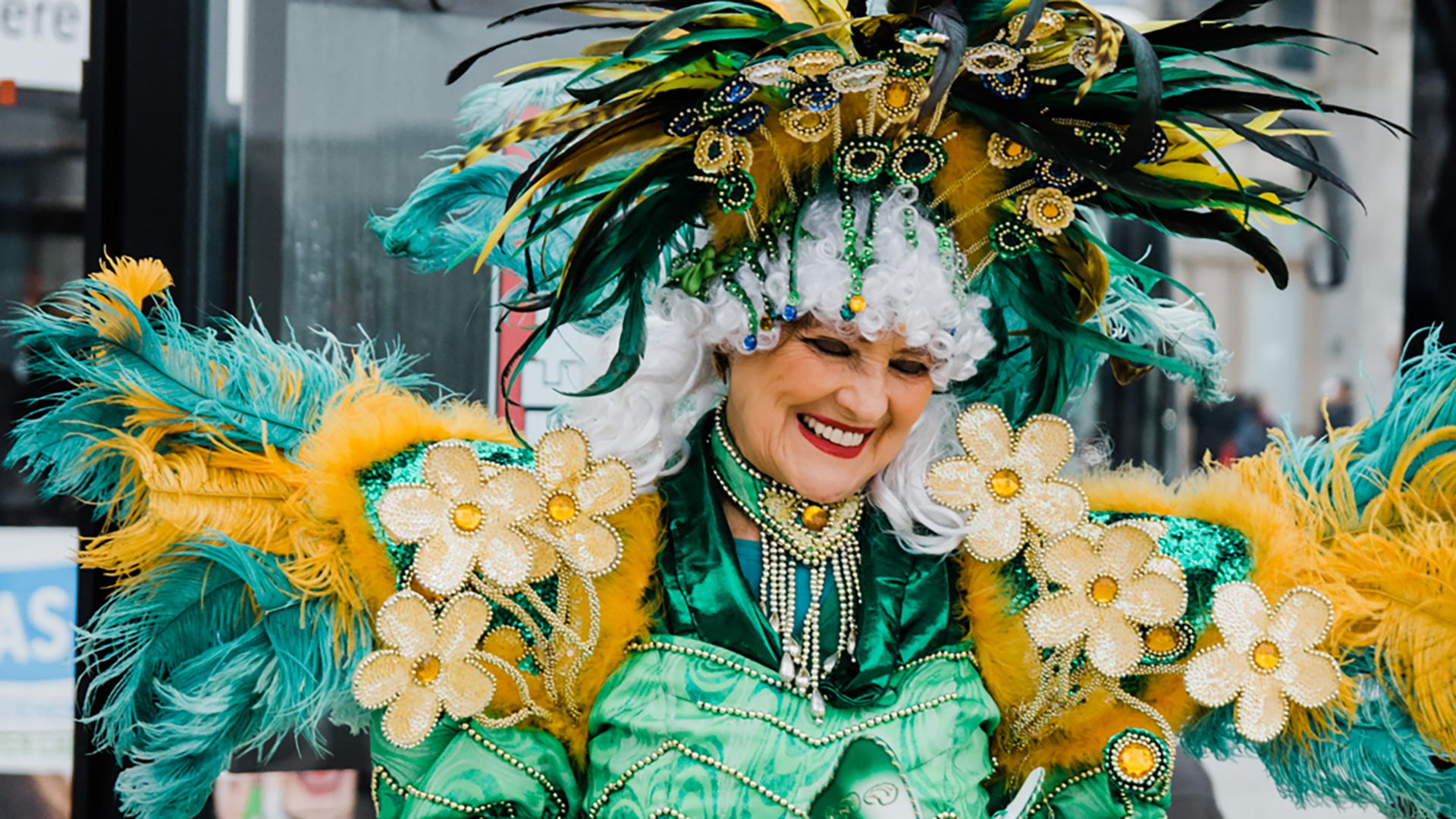 True repentance recognizes that there can be no imposters in the presence of God. Repentance involves letting down our pretenses and laying our masks aside. It means revealing and confessing our sin and then turning away from it.
True repentance recognizes that there can be no imposters in the presence of God. Repentance involves letting down our pretenses and laying our masks aside. It means revealing and confessing our sin and then turning away from it.
Repentance is choosing to remove the mask and not put it on again, believing that Jesus died to save the person behind the mask. Because of Jesus’s death and resurrection, we can come before God without pretense, fear, or shame—without our masks.
Katlyn Pedroza is a community engager living in Germany. She is married to a church planter and is a mom to three little travelers. Most days she’s drinking coffee, capturing the beauty in the chaos through her camera lens, and pretending to know what she’s doing while figuring it out on the go.

